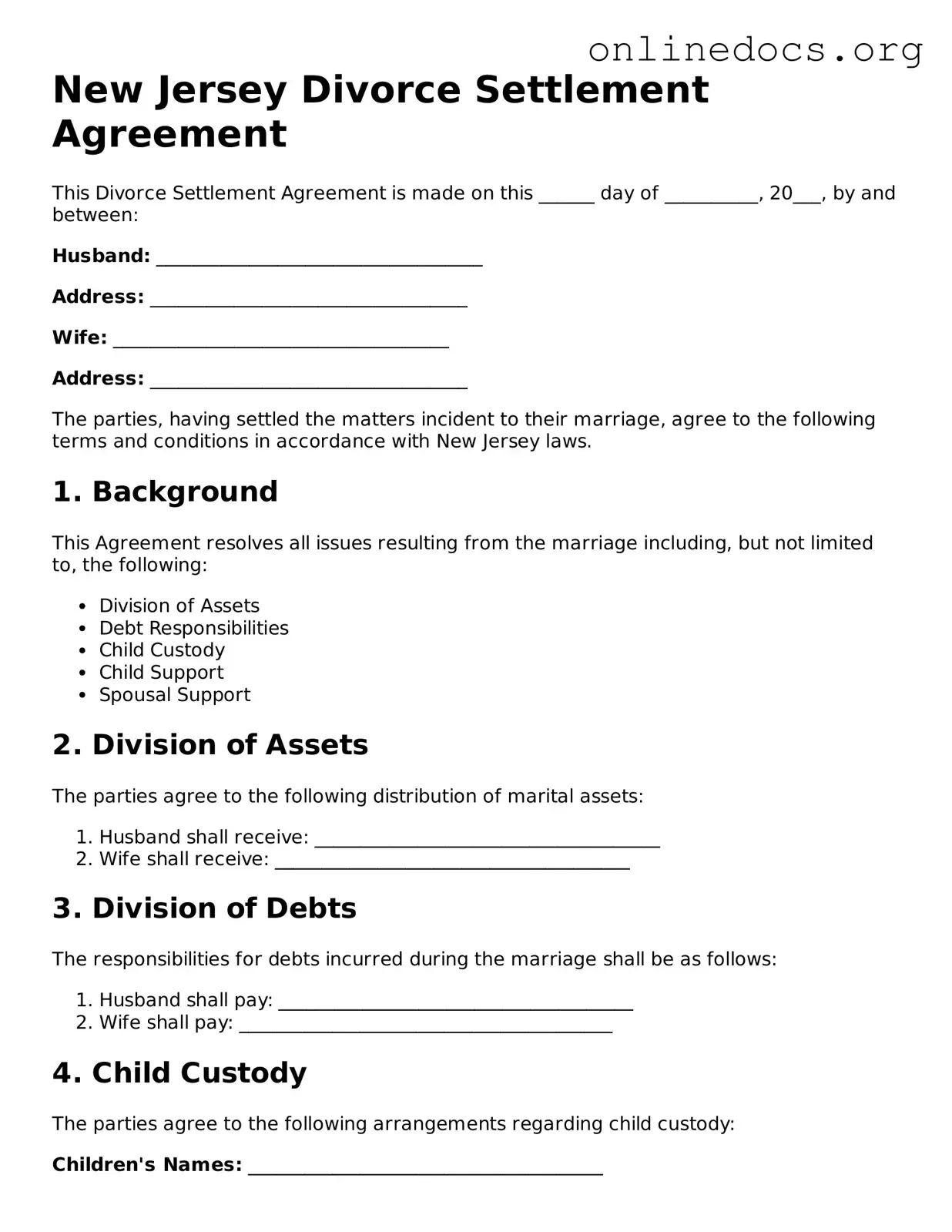The New Jersey Marital Settlement Agreement is quite similar to the Divorce Settlement Agreement. Both documents outline the terms and conditions agreed upon by both parties regarding the division of assets, debts, and responsibilities after a divorce. Each agreement serves as a roadmap for how the couple will handle their financial and personal matters post-divorce. They aim to minimize conflict by clearly stating what each party has agreed to, making future disputes less likely.
The Child Custody Agreement also shares similarities with the Divorce Settlement Agreement. While the Divorce Settlement focuses on financial aspects, the Child Custody Agreement specifically addresses the care and custody of children. It outlines where the children will live, visitation schedules, and how decisions about their upbringing will be made. Both documents are essential in ensuring that the needs of the children are prioritized and that both parents understand their rights and responsibilities.
A Parenting Plan is another document that resembles the Divorce Settlement Agreement. This plan provides a detailed outline of how parents will co-parent after separation or divorce. It includes schedules for parenting time, holiday arrangements, and communication methods between parents. Like the Divorce Settlement Agreement, it aims to create a stable environment for children and reduce potential conflicts between parents.
If you're looking to transfer ownership of a motorcycle, it's important to have a proper document in place. A California Motorcycle Bill of Sale form is a legal requirement in such cases as it facilitates the transfer process and ensures that both the seller and buyer have documented proof of the transaction. To get started, you can create your document at fillpdf-forms.com/.
The Property Settlement Agreement is closely related to the Divorce Settlement Agreement as well. This document specifically focuses on how marital property will be divided between the spouses. It details which assets and debts belong to each party, ensuring that both individuals understand their rights regarding property ownership. This agreement helps to prevent disputes over property division after the divorce is finalized.
The Alimony Agreement is similar to the Divorce Settlement Agreement in that it outlines the financial support one spouse may provide to the other after separation. This document specifies the amount and duration of alimony payments, helping to ensure that both parties have a clear understanding of their financial obligations. Like the Divorce Settlement Agreement, it aims to provide stability and clarity during a time of transition.
Finally, the Separation Agreement bears resemblance to the Divorce Settlement Agreement. This document is often used when couples decide to live apart but are not yet ready to divorce. It covers similar topics such as asset division, child custody, and support obligations. Both agreements serve to clarify expectations and responsibilities, helping to ease the transition for both parties involved.
